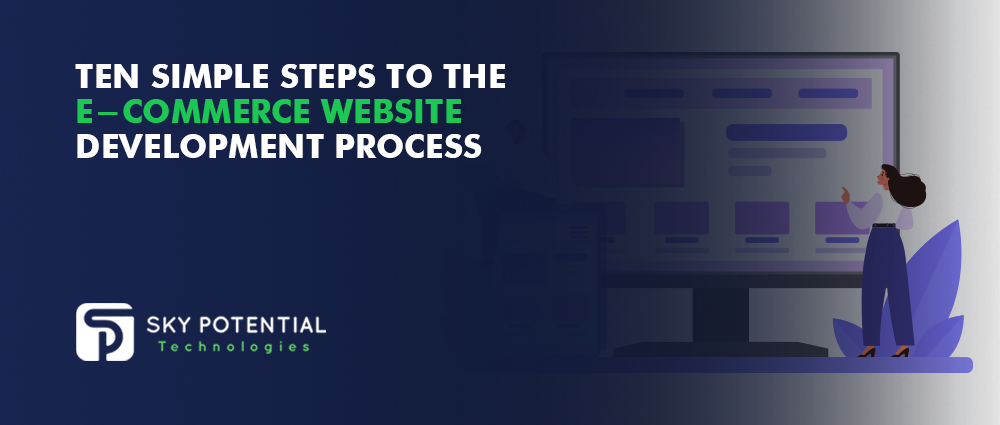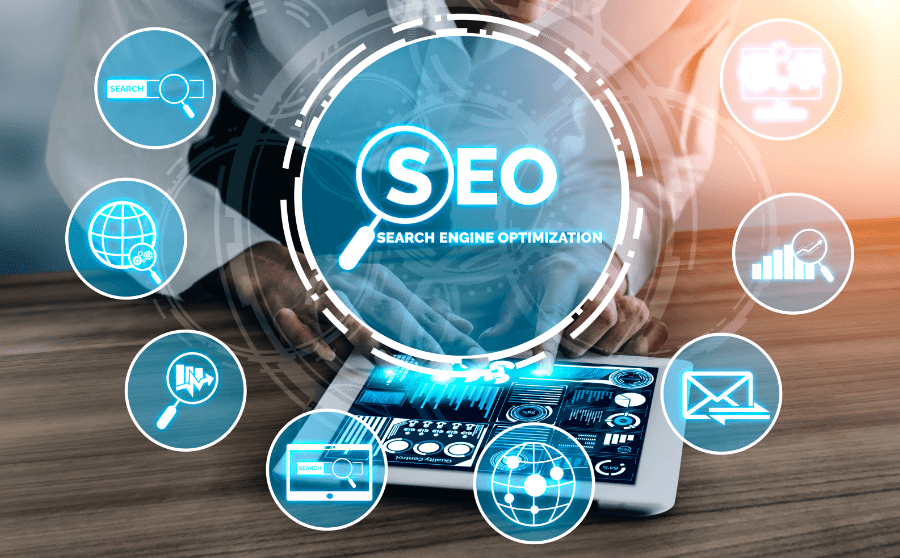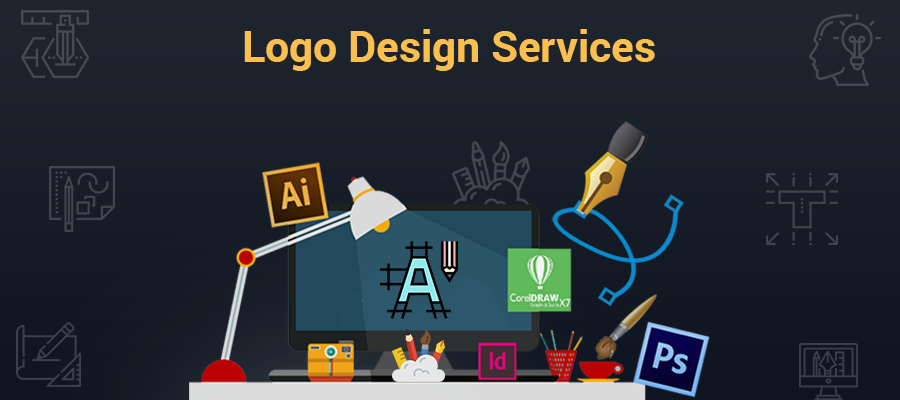From branding to shipping, we’ll guide you through the ecommerce website development process and what it takes to build your own online business.
According to a research, in 2021, global e-commerce retail sales were about $5.2 trillion. Luckily, we’ve developed a 10-step process to help you create a successful e-commerce store in no time.
10 Steps in the E-commerce Website Development Process
Building an online store is something more than understanding the market you’re trying to enter. You should also understand web design, branding, and content strategy.
Break it down into ten steps to simplify your own ecommerce web development services and help you reach your business goals.
Know What You’re Trying To Sell
The first step towards ecommerce development is figuring out what you’re trying to sell. What excites you?
Building an online store around your passion creates a business you love.
Of course, many companies were founded for other reasons. Perhaps you have a specific market need and want to provide a product solution to solve a potential customer problem.
Whatever your business goals, an e-commerce project should be guided by both product research and audience research.
Determine the E-Commerce Business Model
There are many e-commerce business models, but the two main categories are business-to-business (B2B) and business-to-consumer (B2C). It’s important to understand the difference and where your e-commerce business is positioned.
Business to Consumer (B2C)
The majority of online stores we interact with are business-to-consumer (B2C). Whether it’s Amazon, Zappos, or Target, every time you click the checkout button, you’re completing a transaction on your B2C website. Items or services on the B2C Website are sold directly by businesses to the general public without the involvement of third parties.
Business to Business (B2B)
Business to Business (or B2B), as the name suggests, is a company that sells to other companies. These are companies that may manufacture, wholesale or provide services or products within a particular industry. ROOM is a good example of a B2B e-commerce business.
Know Your Audience
One of the benefits of starting an online business in any area you know well is that you already know your audience because you are part of it. But even though if you already know your customers, it’s still beneficial for your e-commerce business to do a little work to get to know them better.
Understanding who your potential customers are affects every part of the e-commerce development process. User experience and interface, web design visuals, content, etc., should all be tailored to the prospective customer.
Think of a Good Company Name
Don’t fall for clichés or name your company too closely related to your competitors. You have to stand out. A unique name distinguishes you from everyone else living in the same market.
Keep It Short
A short name increases brand awareness. Just ask Apple, Etsy, or Google. People want something easy to remember and not complicated.
Be Original
A boring, mediocre name can belittle your brand, no matter how great your product or service is.
And don’t forget you can get a domain name. A unique brand name means you are more likely to get the ideal domain name.
Buy a Domain Name
Ok. I found the company name and URL available. Register your domain name before you start building your store. A lot can change rapidly on the web, and the perfect URL can be found in the after stages of ecommerce website development. Buy your domain name so you don’t need to worry about it afterwards. trust us
Determining Branding
Brands like Coca-Cola, Starbucks and Apple are ingrained in our collective psyche. With iconic logos, visual identities, and speaking styles, these brands connect more with consumers than companies with less defined identities. Branding gives a company an emotional resonance, transforming it from an anonymous presence to one we feel. This keeps consumers loyal to the brand.
An e-commerce website should also have a memorable logo, colour palette and distinctive voice. All these different web design elements combine to create a user experience driven by your brand personality.
Finding the Right E-Commerce Platform
When it comes to ecommerce platforms like Magento, Shopify, or plugins like WooCommerce with WordPress, you have a variety of options to enhance your ecommerce site. And there are certainly pros and cons between the various ecommerce products out there.
Determining Product Categories
Imagine you are in an elevator in a department store. Next to each button there is a description of what is on that floor. There is a floor for men’s clothing, a floor for women’s clothing, and a floor for children’s clothing. Getting off at a particular floor takes you to an area full of signs directing you to each area, further categorizing all the products on that floor. Each section brings together products related to the intended audience, the purpose they serve, and the characteristics they share. Navigation, calls to action, and other ways to get people to your products with minimal clicks rely on a set of well-defined product categories.
Take Detailed Product Photos
With a modest setup of a tripod, some lights, and a paper background, most people with a decent camera and a little experience can take good photos. If so, it may be worth hiring a professional for a higher-quality image. Make sure the photo is in focus, white balanced, and the colours match the product. It is the responsibility of the person taking the photo to make sure. If you have photo editing skills to further enhance these shots, they will be a better representation of your product. The product cannot be seen or touched. To compensate for this, the product photography you use should capture all the important details. The more information you convey in multi-angle and close-up images, the better your customers will understand your product.
Write Effective Product Descriptions
Product descriptions tell your customers what they need to know. Highlight the features of the item and the benefits of using it. Give someone all the guidance they need to make the important decision to add to their shopping cart is not enough. You need to be guided by empathy and connect with prospects on a personal level.
Conclusion
E-commerce web development is the process of creating and designing e-commerce websites that allow consumers to purchase products online. E-commerce websites are very popular with consumers, so developing an e-commerce website can increase conversions and revenue for your business. Looking for software development companies in the UK, get in touch with Sky Potentials.




